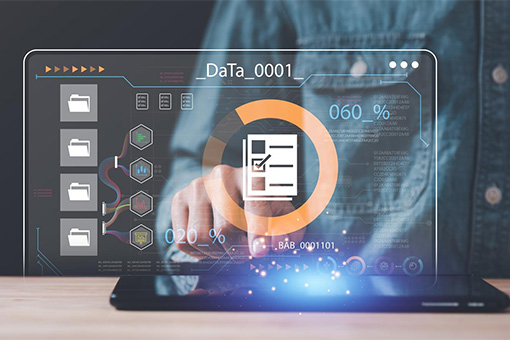Organizations make thousands of decisions every year—but not all of them are good ones. Many struggle not because of a lack of data, but because they don’t know how to extract meaningful insights from it. Business Intelligence (BI) solves this. As the business world accelerates, decisions need to be based on data, not instinct. Yet many companies still rely on scattered spreadsheets, outdated reports, or siloed teams. This results in missed opportunities and costly missteps. Business intelligence (BI) changes that. It empowers organizations to make faster, more accurate decisions based on real-time insights. In this blog, we’ll explore the role of business intelligence in decision making, how it differs from other analytics tools, and why it’s critical for modern business success.
Table of Contents
Understanding Business Intelligence

Business intelligence (BI) refers to a set of technologies, processes, and tools that collect, organize, and analyze business data. It’s designed to convert raw information into digestible insights that inform strategic and operational decisions.
BI typically includes:
- Dashboards and visualizations
- Reporting tools
- Data modeling
- Query capabilities
- Integration with existing systems (e.g., CRM, ERP)
The purpose of BI is to make decision-making data-driven, consistent, and scalable.
Adoption of BI in Businesses

Companies across industries are integrating BI into their daily workflows. Whether cloud-based or on-premise, BI platforms provide the flexibility and scalability needed by both startups and large enterprises.
Why BI adoption is growing:
- Ease of integration with core business systems
- Scalability that grows with the organization
- Real-time access to data for informed decisions
- Subscription-based pricing models for cost efficiency
Importance of BI Tools for Effective Decision-Making

Here’s how business intelligence helps in decision making more efficiently than manual reporting:
- Interactive dashboards allow users to explore data from multiple perspectives
- Automated reporting eliminates repetitive, manual tasks
- Drill-down features help investigate specific trends or issues
- Real-time alerts prompt immediate action
BI tools support day-to-day operational decisions and long-term strategic planning.
Business Intelligence Different from Other Analytics Tools
 Business Intelligence differs from other types of analytics in several key ways:
Business Intelligence differs from other types of analytics in several key ways:
| Type | Focus | Users | Tools | Outcome |
| BI | Descriptive & diagnostic | Business users | BI platforms | Understand what happened and why |
| Data Science | Predictive & prescriptive | Data scientists | ML libraries | Predict what will happen |
| Operational Analytics | Real-time metrics | Ops teams | Embedded tools | Monitor and act on live operations |
| Big Data Analytics | Large-scale trend analysis | Analysts | Big Data stacks | Uncover broad business insights |
The key distinction: BI focuses on making current and past data usable across roles without requiring coding skills.
Benefits of BI in Decision-Making
Improved Accuracy
BI systems consolidate data from multiple sources and clean it automatically, reducing the risk of human error and version conflicts. Teams work from a single source of truth.
Enhanced Speed
Instead of waiting for analysts to generate reports, users can instantly generate their own insights through self-service dashboards. This enables quick reactions and faster planning.
Better Alignment
Unified data views help align departments on shared goals and metrics. When sales, marketing, and operations see the same KPIs, cross-functional decisions become more cohesive.
Risk Management
BI platforms can flag anomalies and trigger alerts. This early warning system helps identify declining performance or unexpected changes so teams can intervene quickly.
How Do Different Decision-Making Constituencies in an Organization Use Business Intelligence
BI supports all levels and functions in a business:
- Executives use it for strategic planning and company-wide KPIs
- Finance teams rely on BI for budgeting, cost control, and forecasting
- Sales monitors pipeline activity and quota achievement
- Marketing analyzes campaign performance and audience behavior
- Operations track logistics, supply chain, and inventory
- HR examines workforce trends, recruitment funnel, and retention
This demonstrates how different decision-making constituencies in an organization use business intelligence to make smarter, faster decisions at every level.
Latest Trends in the Analytics Industry
AI and Machine Learning Integration
Modern BI platforms now integrate basic ML features for forecasting, classification, and anomaly detection.
For example, Microsoft Power BI includes built-in AI visuals and supports predictive modeling using Azure Machine Learning.
Self-Service BI
Non-technical users can now create their own dashboards using drag-and-drop features. This eliminates dependency on IT or data teams and speeds up access to insights.
Cloud-Based BI Solutions
Cloud BI tools are widely adopted due to benefits like:
- No hardware or maintenance
- Faster updates and scalability
- Easy access from remote locations
Mobile BI
Mobile-optimized dashboards allow users to monitor KPIs on smartphones or tablets. Real-time alerts and responsive layouts make decision-making possible from anywhere.
Key Takeaways
- Business intelligence transforms data into real-time, usable insights
- BI supports faster, more accurate decisions across departments
- The decision-making process in business intelligence is proactive, not reactive
- Teams align better when working from a shared, trusted data source
- Trends like AI integration and mobile BI continue to enhance the decision-making experience
About Data Semantics
Data Semantics is a trusted digital transformation partner specializing in business intelligence, data analytics, and application modernization. As a strategic partner with Microsoft, Data Semantics empowers organizations across industries to modernize legacy systems and unlock new business possibilities.
Leveraging Microsoft Azure, they help companies accelerate app modernization using containers and serverless computing, ensuring a clean and scalable production environment. Their DevOps-enabled approach spans the entire application lifecycle and integrates intelligent, data-driven capabilities for more agile decision-making.
With a proven track record across industries, Data Semantics delivers solutions that are flexible, scalable, and aligned with real-world use cases—enabling businesses to turn insights into impactful decisions.
Conclusion
Data alone doesn’t drive business forward—decisions do. Business intelligence makes those decisions smarter, faster, and more consistent by delivering real-time insights in a digestible format. Whether you’re in strategy, sales, finance, or operations, understanding how business intelligence helps in improving decision making gives you an edge. Looking to enable better decision-making across your organization?
Connect with us to explore BI-powered solutions that align with your business goals.












